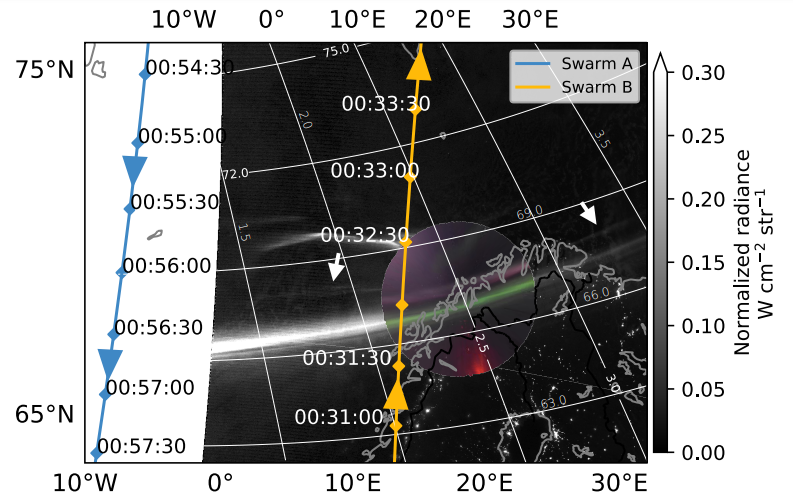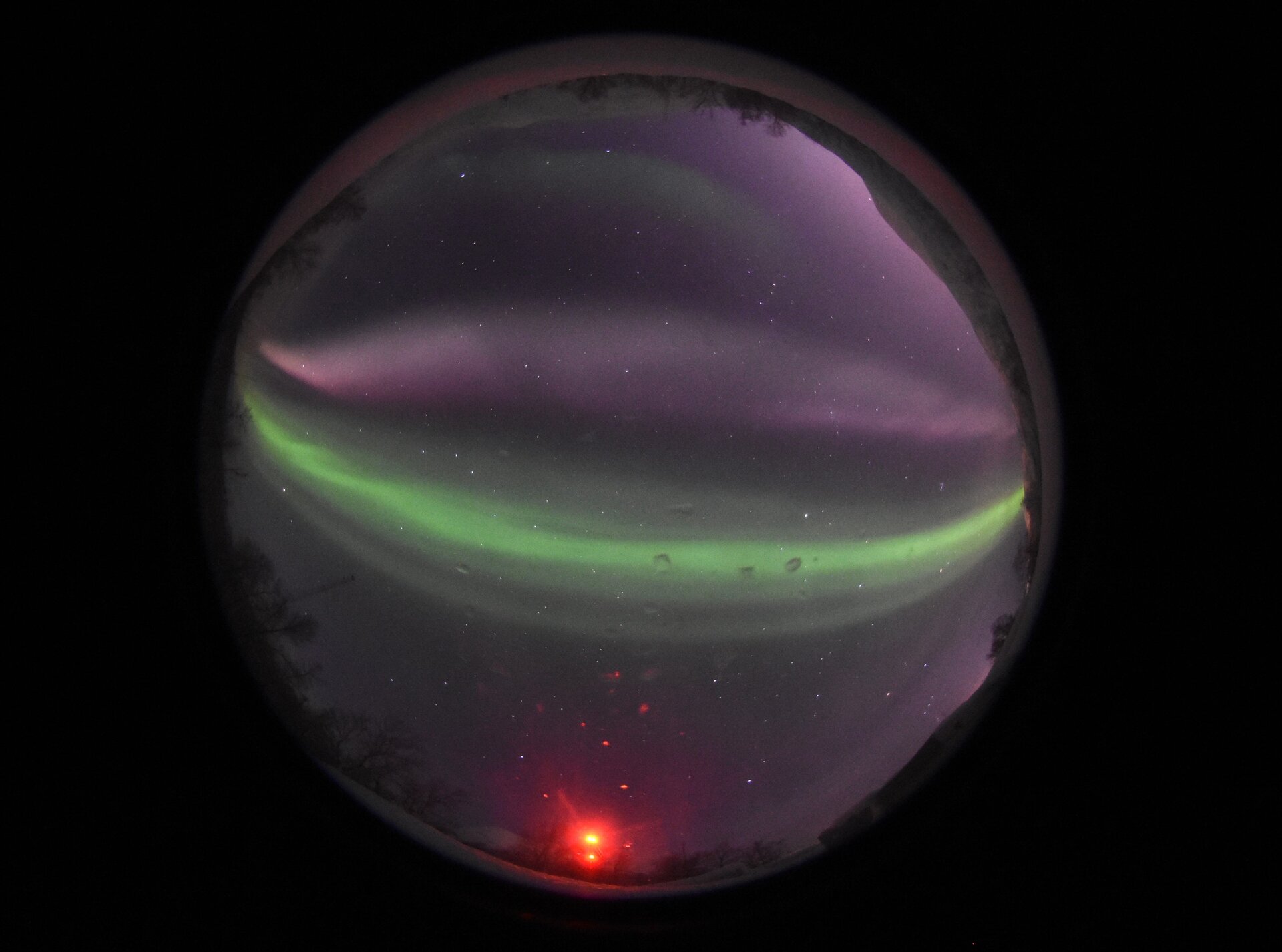Swarm helps discover Steve's long-lost twin
Ever since aurora chasers discovered Steve, a mysterious ribbon of purple light in the night sky, scientists have wondered whether it might have a secret twin. Now, thanks to a photographer’s keen eye, and data from ESA’s Swarm satellites, we may have found it.
Steve was a sensation when scientists stumbled across it a few years ago, thanks to the eagle eyes and excellent photography of the Alberta Aurora Chasers Facebook group.
But its mauve hue and fleeting appearance meant it couldn’t be a feature of the aurora borealis, commonly known as the northern lights, which comes in shades of green, blue and red and can last for hours. So, what could it be?
Fortunately, ESA’s trio of magnetic-field monitoring Swarm satellites were perfectly placed to help investigate.
It turned out that Steve was a fast-moving stream of extremely hot gas called a sub-auroral ion drift. Or, to give Steve its full name, a strong thermal emission velocity enhancement.
But the mystery wasn’t quite over.

Steve makes its appearance at dusk (before midnight) when the fast-moving stream of extremely hot gases move westward. But at dawn (after midnight), we also know that there’s an equivalent stream moving eastward.
If Steve is a visual effect of the westward stream at dusk, should we not expect something similar with the eastward stream at dawn? Could Steve perhaps have a long-lost dawn-side twin?
A new study from the University of Electro-Communications in Japan, the Swedish Institute of Space Physics, the Arctic University of Norway and Tromsø-based photographer Gabriel Arne Hofstra, suggests we might have found it.
It’s once again thanks to researchers and citizen scientists working together.
The team developed an application that collects images of the aurora’s nightly dances above the Norwegian Arctic from the all-sky digital camera at the Ramfjordmoen Research Station.

Whilst looking through its data archives, Gabriel Arne Hofstra stumbled across something peculiar, something Steve-like, in an image from 28 December 2021.
He said, “It has been amazing to have contributed to new science and help scientists uncover this phenomena. To me it proves that we citizens can contribute to understanding the world we live in by collaborating with scientists.
“If we have more ‘eyes on the sky’, we can help unravel its mysteries. I really hope that the recent great geomagnetic storm and spectacular skies has encouraged more people to be interested in space physics and contribute to our scientific understanding of our world.”
But there were key differences compared to Steve. The 1000 km-long arc appeared after midnight, so on the dawn side, and was poleward of the green aurora that could also be seen.

While none of ESA’s trio of Swarm satellites flew directly through the arc at the precise time and place observed in the all-sky image, two of satellites’ electric field instruments were able to measure the conditions in the purple region before, during and after the event.
The data showed the hallmarks of an eastward ion flow in the purple region.
“As a scientist, collaborating with a photographer to uncover this new phenomenon has been a fantastic experience,” says Sota Nanjo of the University of Electro-Communications.
“Our findings not only open new avenues in auroral physics, but also underscore the importance of continuous collaboration between scientists and photographers. Such efforts are particularly crucial in the coming years as solar activity approaches its peak, when we may encounter extraordinary phenomena.”
Power to the digital camera
While digital cameras are not used scientifically, they do give great contrast between the colours of normal aurora and Steve-like visual effects.
Now, almost everyone has a digital camera in the palm of their hand – so as one of the biggest geomagnetic storms in living memory ripped through Earth’s atmosphere on Friday 10 May 2024, it also became the world’s most documented aurora event ever.
“It’s great to see yet another example of successful citizen science,” says Swarm Mission Manager, Anja Strømme. “The combination of millions of images taken worldwide, along with data from the satellites of ESA’s heliophysics observatory, like Swarm, will give us an even better understanding of how space weather affects Earth’s atmosphere.”















 Germany
Germany
 Austria
Austria
 Belgium
Belgium
 Denmark
Denmark
 Spain
Spain
 Estonia
Estonia
 Finland
Finland
 France
France
 Greece
Greece
 Hungary
Hungary
 Ireland
Ireland
 Italy
Italy
 Luxembourg
Luxembourg
 Norway
Norway
 The Netherlands
The Netherlands
 Poland
Poland
 Portugal
Portugal
 Czechia
Czechia
 Romania
Romania
 United Kingdom
United Kingdom
 Slovenia
Slovenia
 Sweden
Sweden
 Switzerland
Switzerland




































